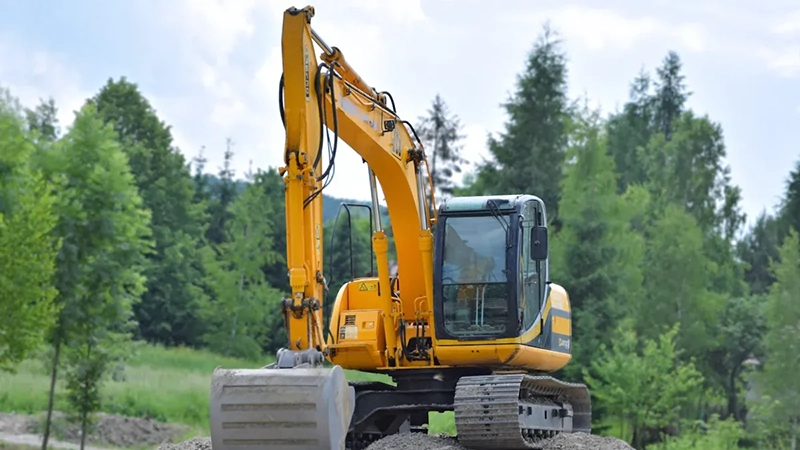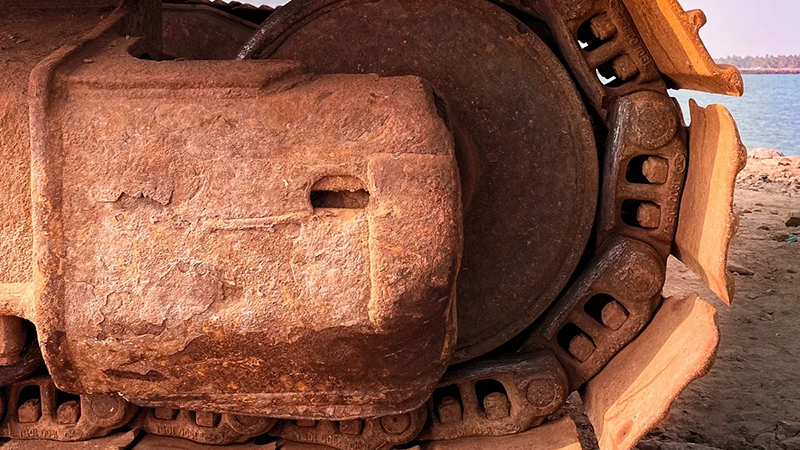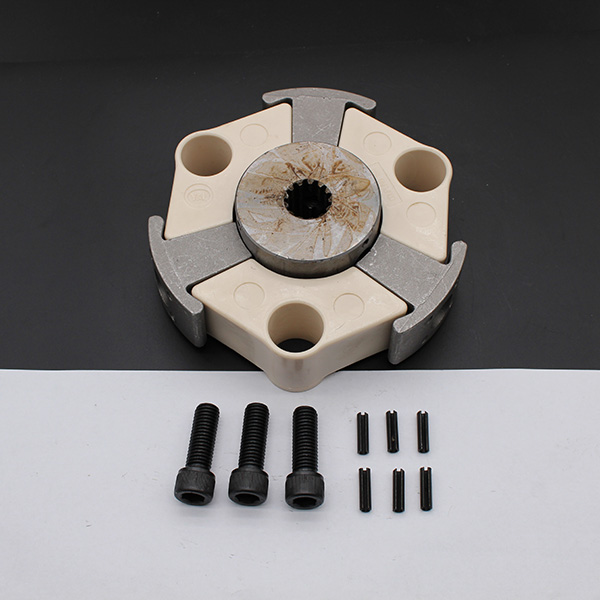
Excavator boom parts are important for your machine to work well. Ignoring maintenance can cause breakdowns, expensive fixes, and long delays. Regular care reduces downtime, boosts work speed, and makes machines last longer. Taking care of your excavator often helps it work better and avoids damage. A cared-for boom improves efficiency and lowers the chance of sudden problems. This keeps your excavator running smoothly and in great shape.
Key Takeaways
- Taking care of excavator boom parts stops breakdowns and big repairs. Checking daily helps find problems early.
- Add grease to moving parts every 50 to 100 hours. This lowers friction and keeps parts working longer.
- Pick good-quality OEM parts for better fit and use. Spending on good parts saves repair money later.
- Teach operators not to overload or move too fast. Training makes the excavator safer and work better.
- Look at hydraulic hoses and connections often to stop leaks. Finding leaks early keeps the excavator safe and working well.
Understanding Excavator Boom Parts
Key Components
Hydraulic Cylinders
Hydraulic cylinders are the main power source for the boom. They create the force needed to lift and dig. These cylinders use hydraulic fluid to make pressure. This pressure moves the boom and arm. If cylinders don’t work well, heavy tasks become hard. Checking them often helps avoid leaks or pressure problems.
Pins and Bushings
Pins and bushings link the boom’s moving parts together. They help parts move smoothly and reduce damage from use. Over time, they can wear out from constant work. Replacing worn pins and bushings stops damage to other parts. Adding grease to them makes them last longer.
Structural Arm and Joints
The structural arm and joints support the boom’s weight. They carry heavy loads during digging jobs. Cracks or damage in these parts can make the machine unsafe. Checking them often keeps the excavator stable and reliable. Fixing small problems early avoids big, costly repairs.
Role in Excavator Operations
Lifting and Digging Functions
Boom parts are key for lifting and digging jobs. Hydraulic cylinders power the boom, arm, and bucket to move. This lets you lift heavy things and dig hard ground. Studies show lighter parts improve digging power. Strong, well-designed parts make the hydraulic system work better.
Impact on Overall Performance
The boom’s condition affects how well the excavator works. Worn or broken parts lower efficiency and cause breakdowns. For example, telescopic booms need strength and flexibility for long reach tasks. Keeping parts in good shape ensures smooth work and less downtime.
Daily Maintenance Tips for Excavator Boom Parts

Inspection Practices
Checking for Cracks or Damage
Regular checks keep your excavator working safely and well. Look for cracks or damage on the boom and its parts. Focus on welds and joints since they handle the most stress. Problems like boom drift happen from hydraulic leaks or worn seals. Finding these issues early stops wear and keeps the machine safe.
Monitoring Hydraulic Hoses and Connections
Hydraulic hoses and connections are important for the boom’s work. Check for fraying, leaks, or other signs of damage. Broken seals can cause leaks, lowering pressure and risking safety. Taking care of these parts avoids failures and keeps the machine running.
Cleaning Techniques
Removing Dirt and Debris
Dirt buildup can make parts overheat and work poorly. Clean surfaces with safe cleaning products to remove dirt. Use tools like air blowers or vacuum cleaners for tight spaces. Covers and filters protect parts from dirt and keep them clean longer.
Preventing Rust and Corrosion
Rust can weaken the boom and cause big problems. After cleaning, dry all parts to stop moisture buildup. Anti-rust sprays or coatings add extra protection. Good airflow and ventilation help prevent rust from forming.
Lubrication Guidelines
Importance of Lubrication
Lubrication reduces friction and wear on moving parts. It helps parts last longer and work smoothly. Skipping lubrication can cause breakdowns and expensive repairs.
Recommended Schedule for Lubrication
Manufacturers suggest lubricating parts every 50 to 100 hours. Daily checks help you spot areas needing oil quickly. Always use good-quality oil to keep parts working their best. Following this schedule keeps your excavator in great shape.
Preventive Maintenance Tips for Excavator Parts
Hydraulic System Care
Checking Fluid Levels
Hydraulic fluid levels must stay correct for smooth operation. Low fluid can lower pressure and make the boom work poorly. Check the reservoir daily and add fluid if needed. Use clean filters to stop dirt from entering the system. Clean fluid at the right level keeps the hydraulic system strong. Regular checks save money by avoiding expensive repairs.
Identifying Leaks or Pressure Issues
Leaks in hydraulic systems cause big problems and delays. Look at hoses, seals, and connections for damage or wear. Small leaks can quickly become major issues if ignored. Fixing leaks early prevents breakdowns and keeps work safe. This kind of care helps the excavator run well and safely.
Securing Bolts and Fasteners
Ensuring Tight Connections
Loose bolts can make your excavator unsafe and less stable. Check all bolts often, especially on the boom and arm. Tighten loose bolts to stop parts from moving during use. This easy step avoids costly repairs and keeps the machine safe.
Tools for Proper Tightening
Using the right tools is important for tightening bolts. Torque wrenches help tighten bolts to the correct level. Over-tightening can harm threads, while under-tightening makes bolts loose. Following these tips keeps your excavator parts secure and stable.
Structural Integrity Checks
Inspecting Welds and Joints
Welds and joints carry heavy loads during digging jobs. Check these areas often for cracks or stress marks. Telescopic booms need extra care since they handle more strain. Finding small problems early stops them from becoming bigger issues.
Addressing Minor Damage Early
Small cracks or dents can weaken the arm over time. Fix these problems quickly to avoid worse damage later. Regular care like this cuts downtime and repair costs. Staying ahead of issues keeps your excavator boom parts in great shape.
Common Problems with Excavator Boom Parts and Fixes
Spotting Wear and Damage
Cracks in the Boom
Heavy loads and repeated use can cause cracks. These cracks make the excavator less stable and unsafe. Check the boom often to find cracks early. Focus on welds and areas under stress. Fixing cracks quickly stops more damage and keeps it safe.
Worn Pins and Bushings
Pins and bushings wear out from constant movement and rubbing. Worn parts can cause misalignment and stress other components. Replace old pins and bushings to keep parts working well. Adding grease often helps them last longer and reduces wear.
Fixing and Replacing Parts
Knowing When to Replace
Fixing or replacing parts on time is very important. Change parts if you see cracks, wear, or poor performance. For example, replace hydraulic cylinders or pins if they fail. Following a maintenance plan helps you know when to replace parts.
DIY Repairs vs. Hiring Experts
Some fixes need experts, like hydraulic or structural repairs. Experts have the tools and skills for safe repairs. You can do small fixes, like tightening bolts, with the right tools. Always check how hard the repair is before deciding to do it yourself.
Stopping Problems from Happening Again
Finding the Main Cause
Knowing why problems happen helps stop them from repeating. For example, leaks often come from damaged hoses or seals. Fixing these early avoids more failures. The table below shows common issues and their causes:
| Problem | Cause |
| Hydraulic Leaks | Damaged hoses, seals, or fittings cause low performance and strange noises. |
| Boom Drift | Worn cylinder seals or internal leaks lower efficiency. |
| Bucket Movement Problems | Broken hydraulic parts make the bucket unsafe and hard to use. |
Changing How You Use the Machine
Using the excavator carefully lowers wear and tear. Don’t overload the boom or make sudden moves. Train operators to use the machine properly and within limits. These changes, along with regular care, keep the excavator working well.
Best Practices for Long-Term Maintenance
Following a Maintenance Schedule
Why Regular Check-Ups Matter
Regular check-ups keep excavator boom parts in good shape. Daily checks help find damage early and avoid big repairs. Scheduled services allow deeper inspections and timely part changes. These steps prevent breakdowns and keep your machine running longer.
Tip: Check your excavator daily and follow the service schedule. This avoids surprises and helps your machine last longer.
Using Manufacturer Instructions
Manufacturer instructions give specific tips for your excavator model. They explain how to keep it working well and avoid problems. For example, they tell you when to change hydraulic oil and filters. Following these tips improves performance and lowers repair costs.
Operator Training
Preventing Overloading
Overloading the boom can cause serious damage over time. Train operators to stay within the machine’s limits. Proper training reduces stress on excavator boom parts and boosts efficiency. Operators who know weight limits help the machine last longer.
Avoiding Sudden Moves
Sudden moves can harm hydraulic systems and other parts. Teach operators to use smooth motions when digging or lifting. This lowers wear and keeps the machine safer to use.
| Metric | What It Means |
| Availability | Time the operator works compared to scheduled work time. |
| Performance | Number of parts made compared to expected parts. |
| Quality | Good parts made compared to total parts made. |
| Overall Labor Effectiveness | Combines Availability, Performance, and Quality into one percentage. |
Training operators improves these numbers, leading to better performance and less downtime.
Using High-Quality Replacement Parts
Why OEM Parts Are Better
OEM parts are made for your specific excavator. They fit perfectly and meet high standards. Using these parts ensures safety and fewer problems. They also help your machine last longer and work better.
Problems with Cheap Parts
Cheap parts might cost less but can cause big issues. Bad filters let dirt into the hydraulic system, causing damage. Low-quality pins and bushings wear out fast and cause misalignment. Always choose good-quality parts to avoid these risks.
Note: Spending more on OEM parts saves money later by avoiding repairs and keeping your machine working well.
Taking care of excavator boom parts helps them last longer. It also lowers repair costs and keeps the machine working well. Simple tasks like daily checks, cleaning, and adding oil keep parts in good shape. Following the maker’s schedule makes the excavator work better and avoids delays. For instance, checking fluid levels and undercarriage parts stops sudden problems. Hiring experts for hard repairs keeps the machine safe and reliable. Regular care protects your machine and helps it work smoothly for a long time.
FAQ
How often should you inspect excavator boom parts?
Check boom parts every day for cracks, wear, or leaks. Daily checks stop big problems and keep the machine safe. Look closely at hoses, pins, bushings, and welds during checks.
What type of lubricant works best for excavator boom parts?
Use good-quality grease or oil suggested by the maker. These help parts move smoothly and last longer. Don’t use random products that might not suit your machine.
Can you repair hydraulic leaks yourself?
You can fix small leaks by tightening or replacing seals. For big leaks, call an expert for help. Trying hard repairs without skill can make things worse.
Why is operator training important for maintenance?
Trained operators handle machines carefully and avoid sudden moves. This lowers stress on parts and makes them last longer. Training also helps work get done faster with fewer delays.
Should you always use OEM replacement parts?
OEM parts fit right and are made to high standards. They keep the machine safe and reliable. Cheap parts break often and cost more to fix later. Spending on OEM parts saves money over time.





